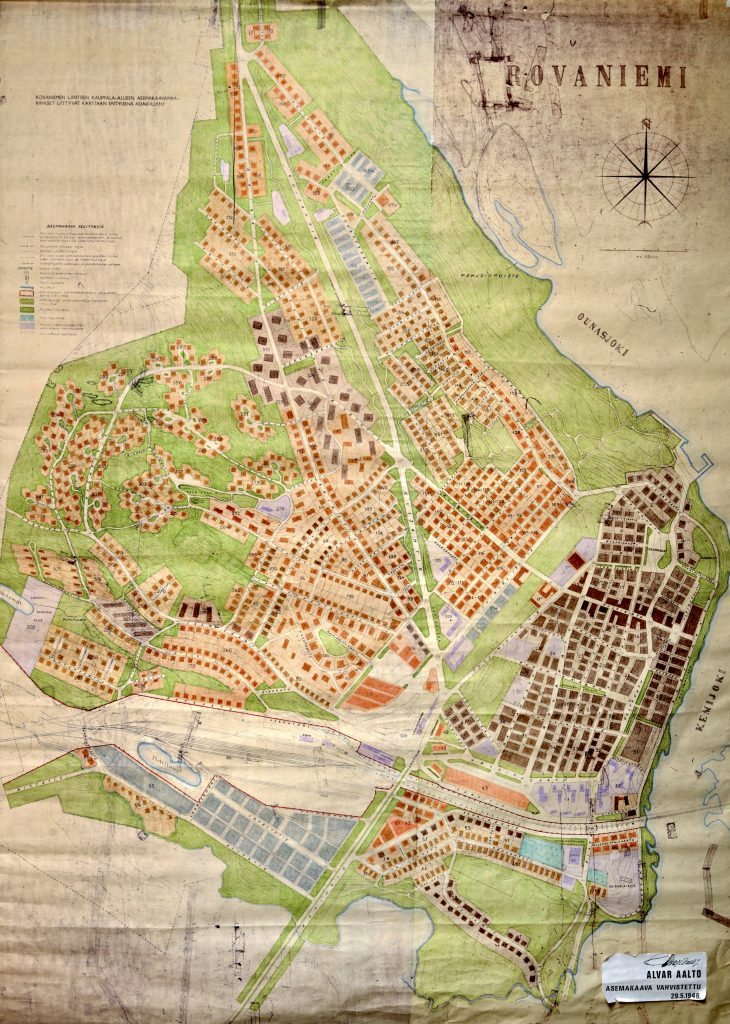Here you have information about the objects of the A&DO Lab exhibition Rovaniemi edition.
No 1
ILAHUboards
Seipi snow surfboard, 2022
Design: Jan Erik Leutola
Manufacturer: TREEFORM Ltd, ILAHUboards

Photograph: Jani Kärppä, KOTA Kollektiivi
ILAHUboards are crafters of binding-free snow surfboards. Adapting the shape of a surfboard, they are designed not for catching waves but for gliding through deep powder snow. The Nordic art of powder surfing is a fusion of skateboarding, surfing and snowboarding. The boards are hand-crafted in Finland and made from all-Finnish materials, their design aesthetic inspired by the northern wilderness. Snow surfing is the perfect way to enjoy the tranquility of nature and the rush of freeriding through pristine powder snow.
Designer and master carpenter Jan Erik Leutola:
“I strive to make high-quality, ecological snow surfboards that my customers and I can be proud of. I want everyone to rediscover the joy of that five-year-old kid somewhere inside them as they soar downhill faster than the wind. ‘Ilahu’ means ‘rejoice’ – and that’s the whole idea: rediscovering joy and having fun!”
No 2
Halo Cubic architectural playground equipment, 2017
Design: Lappset design
Manufacturer: Lappset Group Ltd.

Photograph: Lappset Group Ltd.
Lappset Group Ltd. was founded in Rovaniemi in 1970. The company specializes in playground and sports equipment for people of all ages, as well as park and street furniture. Lappset caters for the unique needs of different age groups, with a focus on quality, sustainability and a long product lifespan. Production is based in Rovaniemi, Finland, with sites also in Estonia and Sweden. The company is domiciled and headquartered in Rovaniemi.
Lappset concept designer Ville Kemppainen:
“The first question we ask is: ‘Who we are designing for?’ Our products and playgrounds must be adapted to user needs. User-friendliness and safety are our priorities. Our products comply with Europeans standards, guaranteeing a safe playing environment. We collect ideas from everywhere – travel is one of our key sources of inspiration. Seeing and experiencing things first-hand is a very important part of design.”
No 3
‘Reindeer antler plan’, street plan for the township of Rovaniemi, 1945
Design: Alvar Aalto

Rovaniemi was almost totally destroyed in the Second World War. A new town plan was drawn up by master architect Alvar Aalto. It is called ‘the reindeer antler plan’, as its shape vaguely resembles the profile of a reindeer. When Rovaniemi was being rebuilt from the ashes, Aalto’s plan emerged as a symbol of hope and continuity. It continues to be held dear today as an emblem of Lapland’s nature and livelihood.
Aalto understood the importance of integrating the town with its natural surroundings. The reindeer’s head consists of streets and parks, with the sportsground as its eye. The snout was originally a city park, which has later been supplanted by a four-lane highway. There has been talk of restoring the plan’s original identity.
Rovaniemi City Architect Sipi Hintsanen:
“The town is constantly changing. I want to ensure that the choices we make will also work in the future. Resources were in short supply after the war. Now, with sustainability having emerged as a new priority, we are in a similar situation. Extending the lifespan of existing buildings is the goal of most of our current architectural projects, usually by repurposing.”

Rovaniemi City Architect Sipi Hintsanen standing on a hexagonal property in the Rovaniemi district of Korkalovaara. Photograph: Anssi Jokiranta, Lapin kansa
No 4
Päiviö’s Daughters, part of a snow installation, 1998
Design: Timo Jokela

Photograph: Timo Jokela
Timo Jokela, Professor of Art Education at the University of Lapland:
“In the dialects of Lapland, there are dozens of words describing snow and ice (slush, flurry, etc.). These words express our deep connection with the arctic environment and the beauty of our natural surroundings. Winter has always ruled the rhythm of life in the far North. Our harsh winters are a challenge, but the cold is also our friend and our anchor – and also an opportunity.”
“Our relationship with winter is changing. Snow and ice are invigorating local tourism. Sculptures, castles and other constructions made of snow and ice have become popular new travel destinations all around Lapland.”
“Lapland is a natural hub for this kind of construction because we know how to handle ice and snow – also in playful ways, creating environmental art. We have a legacy of entrepreneurship and engineering expertise, and through art education, people of all ages have been introduced to snow and ice sculpting. Through the input of professional engineers and designers, snow and ice architecture has taken a big leap forward in many respects.”
